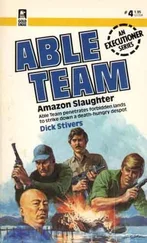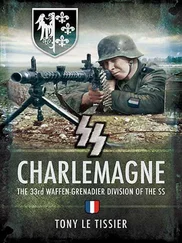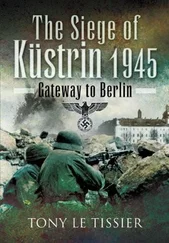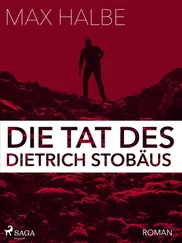The main group had survived the day, despite heavy losses in men and equipment – 1st Ukrainian Front claimed to have taken 20,000 prisoners.
Ernst-Christian Gädtke with the 32nd SS Tank-Hunting Battalion was also in this area later that day:
Dry, sunny spring weather. We rolled on through the woods on tracks and fire-breaks, myself luckily still sitting on the assault gun. Along the route was the occasional dead body, equipment discarded in heaps, abandoned vehicles, and once even a Volkswagen jeep squashed flat in the middle of the road.
In the evening we reached Märtensmühle, between Trebbin and Luckenwalde. Russian troops had passed through here days before on their way to Berlin. Next to the dead soldiers lying in the gardens and alongside the road were civilians, old men and women, and in the ditches discarded plunder, broken suitcases and washing baskets with scattered items of clothing.
We took cover in the Märtensmühle barns. Bread was shared out with canned dripping, which we washed down with ersatz coffee from our mess tins. Someone said that in the morning we would be attacking Beelitz, which was occupied by the Russians. We would break through their positions and then meet up with the troops of General Wenck’s 12th Army west of Beelitz, where they were waiting for us. [13] Gädtke, Von der Oder zur Elbe , p. 36.
Other splinter groups were not so lucky. The 117th Guards Rifle Division encountered a group of about 5,000 Germans near Luckenwalde, of whom eventually 4,500 were captured. Other groups were eliminated by 3rd Guards Army east of Staakow, and by 28th Army east of Kummersdorf Gut.
That night, to prevent 9th Army getting through, Marshal Koniev ordered the redeployment of some of 4th Guards Tank Army into the area east of Beelitz. This included elements of 68th Independent Guards Tank Brigade, 7th Motorcycle Regiment, 71st Light Artillery Brigade, 61st Guards Tank Brigade of 10th Guards Tank Corps, 12th Guards Mechanized Brigade of 5th Guards Mechanized Corps, together with some corps troops. They were given the task of blocking the Michendorf–Treuenbrietzen road (Reichsstrasse 2).
Those elements of Marshal Koniev’s forces fighting in the woods north and north-west of Staakow were relatively successful and by the evening of 30 April had closed up to the line Zesch–Radeland, but in the Baruth area 28th Army and 50th and 96th Guards Rifle Divisions were less successful. Their attacks north of the Hammerfliess depression were met with strong resistance and only reached the line Mückendorf–northern edge of Baruth–Radeland. The 13th Army’s 395th Rifle Division also met strong resistance near Kummersdorf Gut and was unable to penentrate any deeper into the woods. This perhaps reflects the Red Army soldiers’ weariness with the war. In order to prevent the German groups pushing south on Luckenwalde, 280th Rifle Division was redeployed from Jüterbog and was ordered to attack towards Gottow–Schöneweide. It reached these places by evening but without fully completing its task. [14] Lakowski/Stich, Der Kessel von Halbe 1945 , pp. 128–30.
A member of Battlegroup Schill , forming part of the rearguard of the Halbe pocket, reported on this day:
Late on the night of 29/30 April, the Schill Battlegroup abandoned its positions east of the Dahme, other combat units having left hours previously. The order for leaving was already 20 hours overdue. Mobs, unarmed of course, and refugees were wandering around in vast numbers, some of them with vehicles, which hindered our progress. What was intended, we had no idea, we only knew and wanted to reach our goal, if necessary by force, which was the 12th Army’s position this side of the Elbe. We first clashed with enemy forces near the Klein Hammer forest warden’s lodge. Then came enemy tank probes, in which we lost heavily, even though we were reinforced by gunners from the 1st Battalion of 32nd [SS] Artillery Regiment. Those men still capable of fighting reassembled for a break-out to the south-west, but without success. Because of the flood of other shattered troops fleeing back, our hastily-prepared positions were almost overrun. We only held on to the position by the hardest resolve and even won some additional combatants. Those in uniform unwilling to fight vanished into the woods and ran into the next Russians only a few hundred metres away. The day was filled with minor skirmishes with Russian scouts, who withdrew immediately they encountered the least resistance. There were constant air attacks.
During the course of the afternoon, enemy air activity and tank attacks concentrated on an area about three kilometres south-west of us. Occasional 20-mm flak fire indicated that our own troops must be holding out there. The constant firing of white flares by the enemy indicated their targets.
They closed in on us from three sides, our weak perimeter defences being virtually untenable, so that we had to abandon our original intention of fighting our way through the Russian positions during the night, and had to move immediately. After a somewhat hesitant start, the will to fight on prevailed, and we charged with a thunderous ‘Hurrah!’ right through the Russian positions, which promptly gave up all resistance and collapsed.
Our next move was in the direction of the flak fire we had identified. Abandoned items, from water bottles to intact 88-mm flak guns, including their towing vehicles and ammunition, indicated that we were on the same escape route as the units in the days before us. The peaceful heathland here had become a deathtrap for many thousands of brave soldiers and at least as many refugees. Within a few days we had gone from barely negotiable tracks to roads of death and horror. Women and children who had sought safety in flight from the enemy forces and the horrors of war had been overrun here and crushed, just like the thousands of soldiers who had abandoned their fighting and protective roles, thinking only of saving themselves by fleeing.
Communication with the combat team south-west of us was soon re-established and we discovered that it was the remains of SS-General Kleinheisterkamp’s XI SS Panzer Corps group, which included the Panzergrenadier Division Kurmark . This group was getting itself ready for the final breakthrough. The unifying password ‘Freedom’ was given out and the military column set off. The first part of the route was reconnoitred by scouts, and the civilians and wounded placed in the centre. The enemy immediately followed up on both sides as well as at the rear. We saw a barrier in front of us that we had to overcome. It was clearly of Russian construction, and not up to the usual Volkssturm standard. A storm troop was detailed to clear the way and mine detectors were already in operation, despite heavy enemy fire from the flanks exacting a considerable number of casualties. The barrier was taken by assault and the Russian troops gave in.
We were now standing on the outskirts of Halbe and had to redeploy. With all the shooting going on all around us, we were taking considerable numbers of casualties among those in uniform as well as the waiting refugees and wounded, so we reinforced our cover on the flanks. Meanwhile it had become dark, and we could clearly see the flashes of the Russian artillery and rocket launchers firing to the north, south and west of us, so could also see a little of what lay ahead. We could definitely make out the outlines of T-34 and Stalin tanks with a Tiger in between, among the stacks of timber in the sawmill in front of us. Our anti-tank guns opened up, but it was a waste of time as these were already wrecks from the previous days.
From above us came the tacking of the Lame Ducks [15] This was a nickname for the Po-2, sometimes also called the Sewing Machine because of the distinctive sound of its engine. The Po-2 was a biplane, armoured against infantry fire, and used extensively for night bombing, the observer dropping either clusters of hand grenades or light bombs by hand in First World War style. Many of the crews were female.
as they fired one flare after another, so that it became almost as light as day. However, this came in useful in deploying our weapons to the best advantage.
Читать дальше












